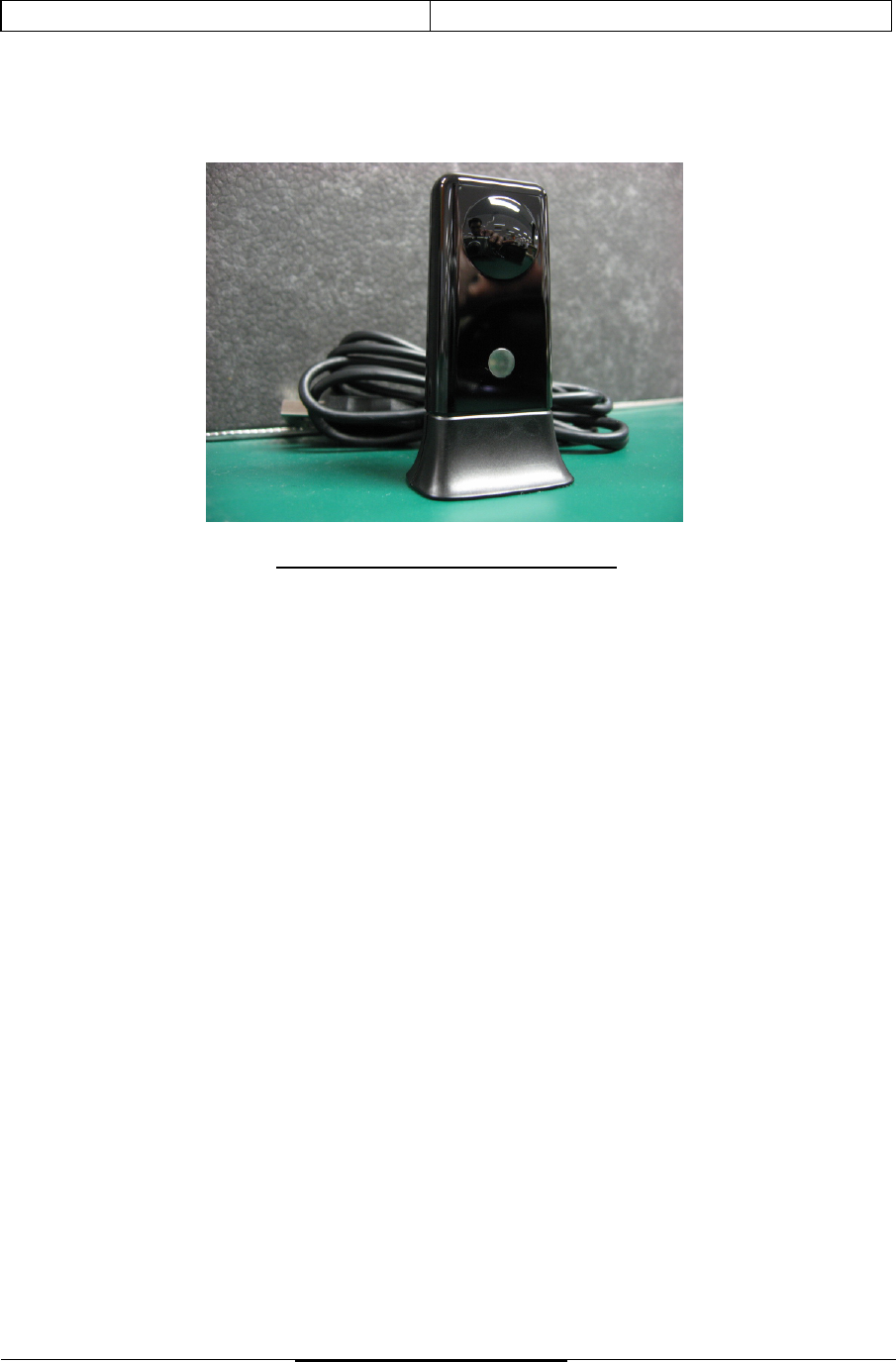Philips Electronics Singapore OVU76A RF2IR Dongle User Manual Manual OU760001 01
Philips Electronics Singapore Pte Ltd RF2IR Dongle Manual OU760001 01
Users Manual

Philips Home Control
Confidential ©Philips Home Control,
2011 Page 1 of 6
Manual of OVU760001/01

OVU760001/01 Manual (Draft Version)
Status :Draft, For Review Page 2 of 6
Philips Proprietary & Confidential
Philips Home Control Company Restricted
FCC Statement
FCC Part 15.19
This device complies with Part 15 of the FCC Rules. Operation is subject to the
following two conditions:
(1) this device may not cause harmful interference and
(2) this device must accept any interference received, including interference that may
cause undesired operation.
NOTE:
This equipment has been tested and found to comply with the limits for a Class B
digital device, pursuant to Part 15 of the FCC Rules. These limits are designed to
provide reasonable protection against harmful interference in a residential
installation.
This equipment generates, uses and can radiate radio frequency energy and, if not
installed and used in accordance with the instructions, may cause harmful
interference to radio communications. However, there is no guarantee that
interference will not occur in a particular installation. If this equipment does cause
harmful interference to radio or television reception, which can be determined by
turning the equipment off and on, the user is encouraged to try to correct the
interference by one or more of the following measures:
-- Reorient or relocate the receiving antenna.
-- Increase the separation between the equipment and receiver.
-- Connect the equipment into an outlet on a circuit different from that to which the
receiver is connected.
-- Consult the dealer or an experienced radio/TV technician for help.
Any changes or modifications not expressly approved by the party responsible for
compliance could void the user’s authority to operate the equipment.
No special accessory is required to enable the equipment to comply with the
emission
limits.

OVU760001/01 Manual (Draft Version)
Status :Draft, For Review Page 3 of 6
Philips Proprietary & Confidential
Philips Home Control Company Restricted
Table of Contents
1.GENERIC FUNCTIONALITY 4
1.1GENERAL FUNCTIONALITY ........................................................................ 4
1.2APPLICATION VIEW .................................................................................. 4
2.RADIO FREQUENCY (RF) FUNCTIONALITY 5
2.1PAIRING AND UNPAIRING .......................................................................... 5
3.PRODUCT OVERVIEW 6

OVU760001/01 Manual (Draft Version)
Status :Draft, For Review Page 4 of 6
Philips Proprietary & Confidential
Philips Home Control Company Restricted
1. GENERIC FUNCTIONALITY
1.1 General functionality
This product is a Radio Frequency (RF) to Infrared (IR) dongle powered by USB. It
receives RF signals and translates them to IR signal and fires it through an IR
emitting diode. The purpose is to allow IR receivers to be controlled by RF remotes.
This product is not meant to communicate through the USB.
1.2 Application view
The RF dongle will first pair with a RF remote before it can be used. After pairing, the
RF dongle will only decode RF signals from the paired remote. Other RF remotes’
signals will be discarded.
After decoding the RF signal, an IR generation process will be initiated.

OVU760001/01 Manual (Draft Version)
Status :Draft, For Review Page 5 of 6
Philips Proprietary & Confidential
Philips Home Control Company Restricted
2. RADIO FREQUENCY (RF) FUNCTIONALITY
2.1 Pairing and Unpairing
The dongle is a target device in the pairing procedure. This means that the dongle
can only receive requests for pairing and unpairing. The initiator of pairing normally
comes from the controller device which is usually the remote controls.
For the OVU760001/01 dongle, there is no button so pairing is initiated when the
dongle is powered up. The pairing period will last 15 seconds. During this pairing
period, when the dongle is successfully paired with the remote, a pairing link is
stored in the dongle pairing table. A total of 10 devices can be paired. When there
are 10 entries in the table, the receiver will not pair with any more new devices.
Existing devices in the table need to be unpaired before new devices can be paired.
Please note that after pairing, when there are 10 entries in the pairing table, the RED
Colour indicator LED will blink 4 times. This is to show that the table is full.
To unpair a device, the remote control will have to send a unpair message to the
dongle. When unpair is done, the Red Colour Indicator LED will blink twice. Please
note that the dongle cannot initiate the unpair process by itself.
One point to note is that the remotes can unpair itself without the presence of the
dongle. This can lead to the dongle having a pairing entry with a remote that has
deleted its entry. To remove the entry in the dongle, use the same remote to pair and
unpair with the dongle again. Look out for the LED to blink twice, indicating a
successful unpair.

OVU760001/01 Manual (Draft Version)
Status :Draft, For Review Page 6 of 6
Philips Proprietary & Confidential
Philips Home Control Company Restricted
3. PRODUCT OVERVIEW
Picture for illustration onl
y